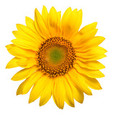If you have a budding Albert Einstein or Madame Currie living under your roof, providing him or her with adequate study space is an absolute necessity. Even if your home is a bit short on space, a personalized study area is very important for a child. Whether you set aside a corner of your child's bedroom or designate a special study area in the home office or dining room, having a dedicated study area can be extremely conducive to the learning process. When designing your child's study area, there are three "must-have" features to keep in mind: a good work surface, comfortable seating and adequate lighting. In addition to these essentials, there are also a number of "extras" that can make a child's study area even more efficient, pleasant and inviting.
Work Surface
When choosing a work surface for your child's study area, a simple desk or appropriately sized table will suffice. If you are a bit short on space, a specially designed armoire that provides hidden table space inside can also be a good choice. It's best to choose your child's workspace based on the activities he or she will most likely be engaged in. For example, a desk with a keyboard shelf can be quite handy for computer usage. A desk with drawers or a shelving hutch can make it easy for your child to store books and study supplies. If your child enjoys working on art projects, a drafting table or convertible desk can be an excellent choice.
Seating
When choosing seating, be sure to select a chair that is adjustable, well built and comfortable. Keep your child's height in mind when purchasing a chair. An adult chair is often too high for a child, even when adjusted.
Lighting
Lighting is an extremely important factor to consider when planning a child's study area. You'll want to make sure that the lighting is adequate, without making it overly bright. If the lighting is too dim or too bright, your child could develop headaches while reading and studying. Typically, a desk or task lamp combined with the room's overhead lighting will be adequate.
Organizational Extras
Depending on how much room you have, you can also add other items to your child's study space in order to make it more functional and organized. A shelf installed over the desk or a freestanding bookcase can provide storage space for books and other reference materials. Shelves can also be handy for printers, clocks, calendars and other useful items. Wall hooks or wall-mounted pocket organizers can be used to provide extra storage space. In fact, you might even find that a pocket-style hanging shoe organizer can work well for this purpose. In order to help your child keep paper clutter to a minimum, be sure that he or she has a trashcan close by. Colorful bins, baskets and other organizers can help your child keep his or her desk space neat and organized, resulting in even more available work space. The end result will be an attractive, well-organized and efficient study corner, providing your child with the personalized space he or she needs in order to do his or her very best work.
Metal-Wall-Art.com regularly features articles written by Maya Willis. Maya is an expert on many decorating subjects, including innovative ways to incorporate coastal metal wall decor and fish wall decor into any home decorating scheme.

Post new comment
Please Register or Login to post new comment.